Big Walnut Early Learning Center At Harrison Street serves 143 students in grades Prekindergarten.
The student:teacher ratio of 24:1 is higher than the Ohio state level of 17:1.
Minority enrollment is 15% of the student body (majority Asian), which is lower than the Ohio state average of 34% (majority Black).
Quick Stats (2025)
- Grades: Prekindergarten
- Enrollment: 143 students
- Student:Teacher Ratio: 24:1
- Minority Enrollment: 15%
- Source: National Center for Education Statistics (NCES), OH Dept. of Education
Top Rankings
Big Walnut Early Learning Center At Harrison Street ranks among the top 20% of public schools in Ohio for:
Category
Attribute
Community Size
School Overview
Big Walnut Early Learning Center At Harrison Street's student population of 143 students has grown by 58% over five school years.
The teacher population of 6 teachers has grown by 20% over five school years.
Grades Offered
Grades Prekindergarten
(No virtual instruction)
(No virtual instruction)
Total Students
143 students
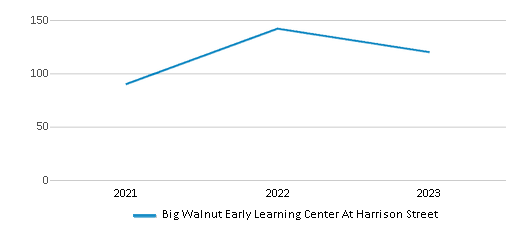
Gender %
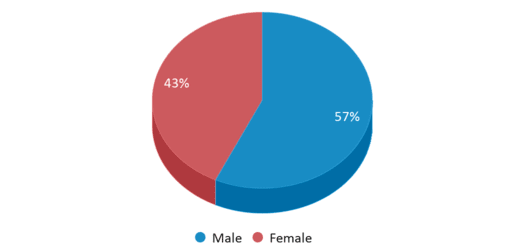
Total Classroom Teachers
6 teachers
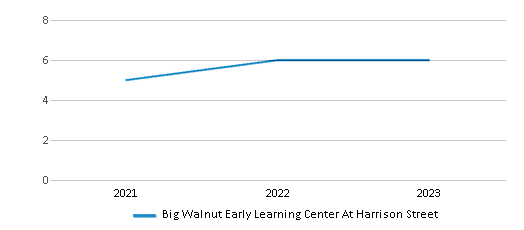
School Rankings
The diversity score of Big Walnut Early Learning Center At Harrison Street is 0.27, which is less than the diversity score at state average of 0.53. The school's diversity has stayed relatively flat over five school years.
Student : Teacher Ratio
24:1
17:1
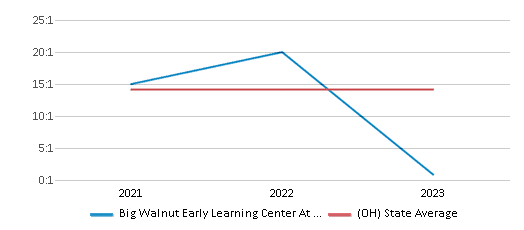
American Indian
n/a
n/a
Asian
5%
3%
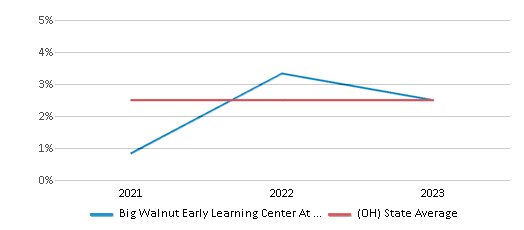
Hispanic
2%
8%
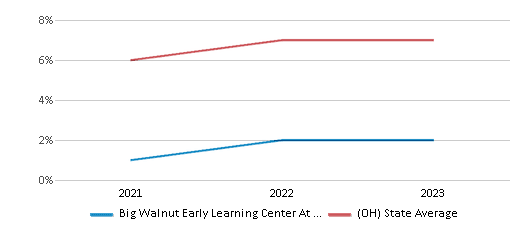
Black
2%
17%
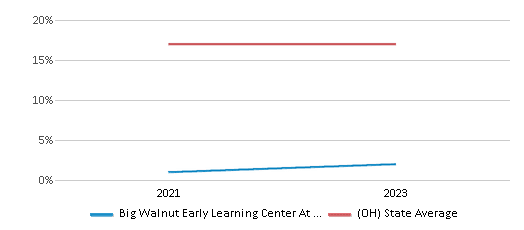
White
85%
66%
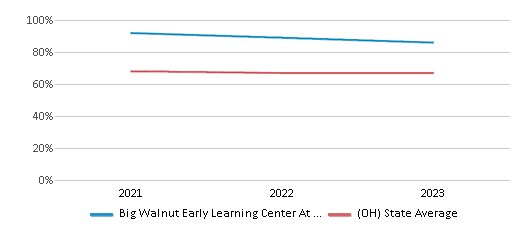
Hawaiian
n/a
n/a
Two or more races
6%
6%
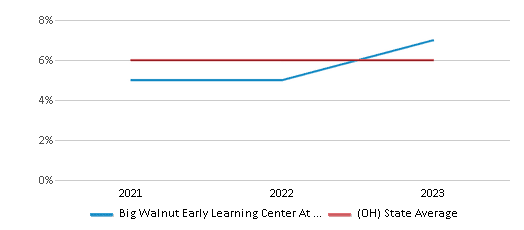
All Ethnic Groups
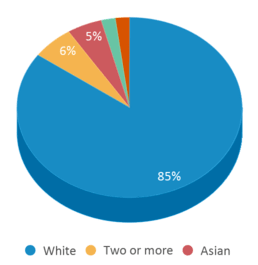
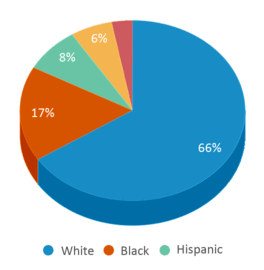

School Statewide Testing
School District Name
Source: National Center for Education Statistics (NCES), OH Dept. of Education
Profile last updated: 02/09/2025
Frequently Asked Questions
How many students attend Big Walnut Early Learning Center At Harrison Street?
143 students attend Big Walnut Early Learning Center At Harrison Street.
What is the racial composition of the student body?
85% of Big Walnut Early Learning Center At Harrison Street students are White, 6% of students are Two or more races, 5% of students are Asian, 2% of students are Hispanic, and 2% of students are Black.
What is the student:teacher ratio of Big Walnut Early Learning Center At Harrison Street?
Big Walnut Early Learning Center At Harrison Street has a student ration of 24:1, which is higher than the Ohio state average of 17:1.
What grades does Big Walnut Early Learning Center At Harrison Street offer ?
Big Walnut Early Learning Center At Harrison Street offers enrollment in grades Prekindergarten (No virtual instruction).
What school district is Big Walnut Early Learning Center At Harrison Street part of?
Big Walnut Early Learning Center At Harrison Street is part of Big Walnut Local School District.
School Reviews
Review Big Walnut Early Learning Center At Harrison Street. Reviews should be a few sentences in length. Please include any comments on:
- Quality of academic programs, teachers, and facilities
- Availability of music, art, sports and other extracurricular activities
Recent Articles

Year-Round Or Traditional Schedule?
Which is more appropriate for your child? A year-round attendance schedule or traditional schedule? We look at the pros and cons.

The Evolving Role of Interim Assessments
Explore the often-overlooked tool in K-12 education - interim assessments. Understand what they are, their importance, and how they can enhance your child's learning experience. Dive into real-world case studies and find out how technology is changing the game. This informative, parent-friendly article aims to shed light on the value of these assessments in today's educational landscape.
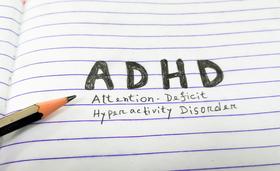
Understanding ADHD in Children: Signs, Diagnosis, and Support Strategies
We explores the complex nature of attention-deficit/hyperactivity disorder (ADHD) in children, providing insights into its symptoms, diagnosis process, and effective support strategies. From recognizing early signs to navigating the diagnostic journey, parents will gain valuable knowledge to help their child thrive. Expert insights, real-life examples, and practical tips empower readers to create a supportive environment that meets the unique needs of children with ADHD.





